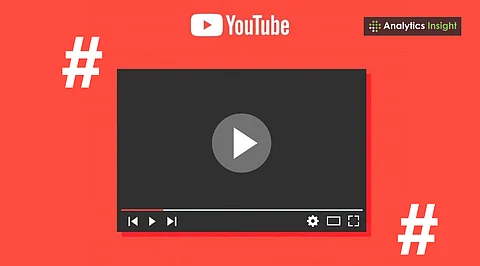

YouTube tags help the algorithm understand video content and improve discoverability.
Using relevant, keyword-rich tags can increase visibility in search and suggested videos.
Combining broad and niche tags creates a stronger reach strategy for targeted audiences.
YouTube is an immensely popular platform for sharing videos, but with countless creators uploading content every day, standing out can be challenging. One effective way to improve your visibility is by using tags strategically.
YouTube Tags help the algorithm understand your video's topic and show it to the right audience. While tags may not carry as much weight as your video title or thumbnail, they still play a valuable role in helping viewers discover your content.
Tags are just words or short phrases you add when you upload a video to let YouTube know what it's about. YouTube is now more interested in titles, descriptions, and thumbnails, but tags are still helpful for search.
Choosing relevant YouTube Tags increases your chances of being recommended on the YouTube homepage. Tags support YouTube to match your video to what people are searching for. This is helpful if your title has unusual spellings, slang, or words that people often type incorrectly.
Think of tags as clues for YouTube. If you tag your video with the right words, YouTube can suggest it to people who might like it. Even if your video has an awesome title and thumbnail, bad tags can hurt how many people see it.
Good tags can also help your videos appear in the related videos section, allowing more people to find them on social media without searching. For instance, if you create videos reviewing phones, consider using tags like 'best phones 2025,' 'tech reviews,' or 'phone comparison.'
Also Read: YouTube Bans AI Videos: Here’s How it Affects Creators
Expanding your content reach involves both creating engaging content and properly placing relevant keywords. Before you upload, do some research to find out what words people use when they search for topics like yours. You can use tools to find keywords. You can also look at what other successful creators are tagging their videos with.
Effective YouTube SEO strategies can significantly improve your search rankings and channel performance. Your tags should be specific to your video, but not too narrow. For example, if you're teaching people how to make pasta, you could use tags like easy pasta recipe, Italian food, and quick dinner ideas.
Mix up longer, more specific phrases with single words. So, something like how to make creamy Alfredo pasta can bring in viewers looking for that exact thing, while shorter tags like cooking or recipe get you seen by a larger crowd.
One common mistake is stuffing your tags with too many unrelated words. This can confuse YouTube. Your video might get shown to the wrong people, who won't watch it for long, which can hurt your channel.
Creators must focus on boost YouTube visibility tactics like metadata optimization and audience engagement. Using popular tags unrelated to your video is also a bad idea. It's better to use a few good tags than a ton of random ones. Keep your tags focused on what your video is really about.
If you're consistent and analytical, you can grow your channel fast even in highly competitive niches. Also, don't use the same tags for every video. It's okay to use a tag with your channel name, but your other tags should be different for each video.
Also Read: YouTube’s Hype Feature: What Small Creators Should Know
Make sure your video title and description also use those same key terms. This makes your video easier to find. Adding subtitles also helps YouTube better understand your video.
Putting your videos into playlists can also assist. When you title and tag your playlists well, more people will find them. Playlists keep people watching longer.
Check your YouTube Analytics to see which tags are performing well. Check out where your viewers are coming from, how long they're watching, and where YouTube is suggesting your videos.
Tags might not be the most powerful thing on YouTube, but they still make a difference. Use the right words, avoid common mistakes, and make sure your titles and descriptions are also strong. Every little bit can add up!
1. What are YouTube tags used for?
YouTube tags help categorize videos and improve visibility in search and recommendations.
2. Do YouTube tags still matter in 2025?
Yes, tags still assist the algorithm, especially with misspellings and content classification.
3. How many tags should be added to a YouTube video?
Around 5–10 relevant and focused tags are ideal for better results.
4. Can unrelated tags harm video performance?
Yes, irrelevant tags can confuse the algorithm and reduce audience retention.
5. Should tags be the same for every video on a channel?
No, tags should be tailored to each video’s unique content for best reach.
